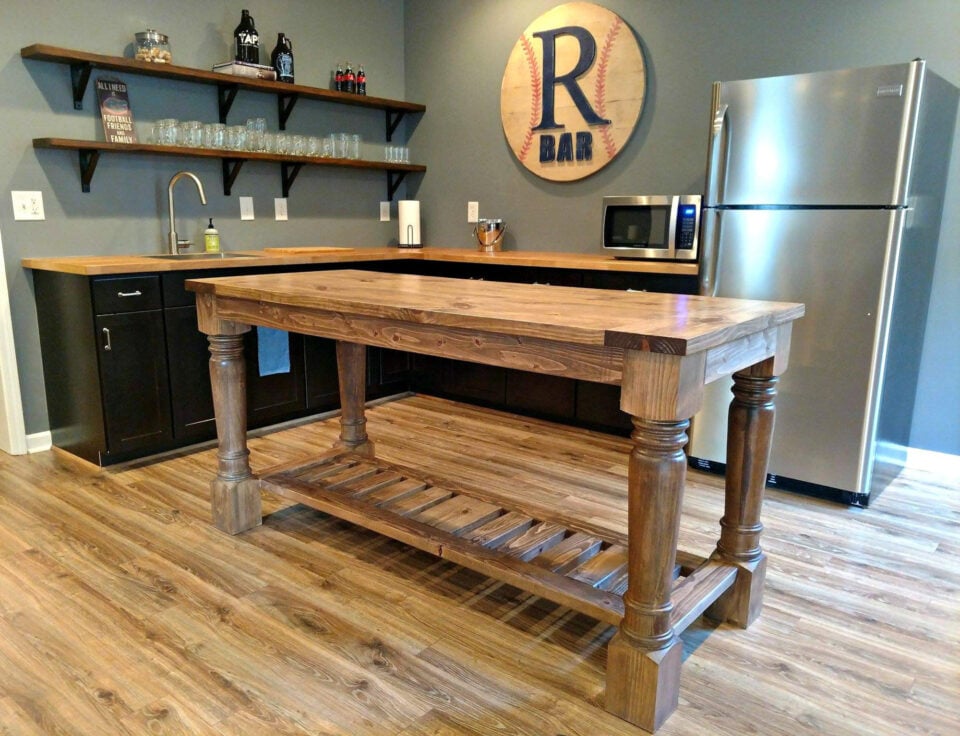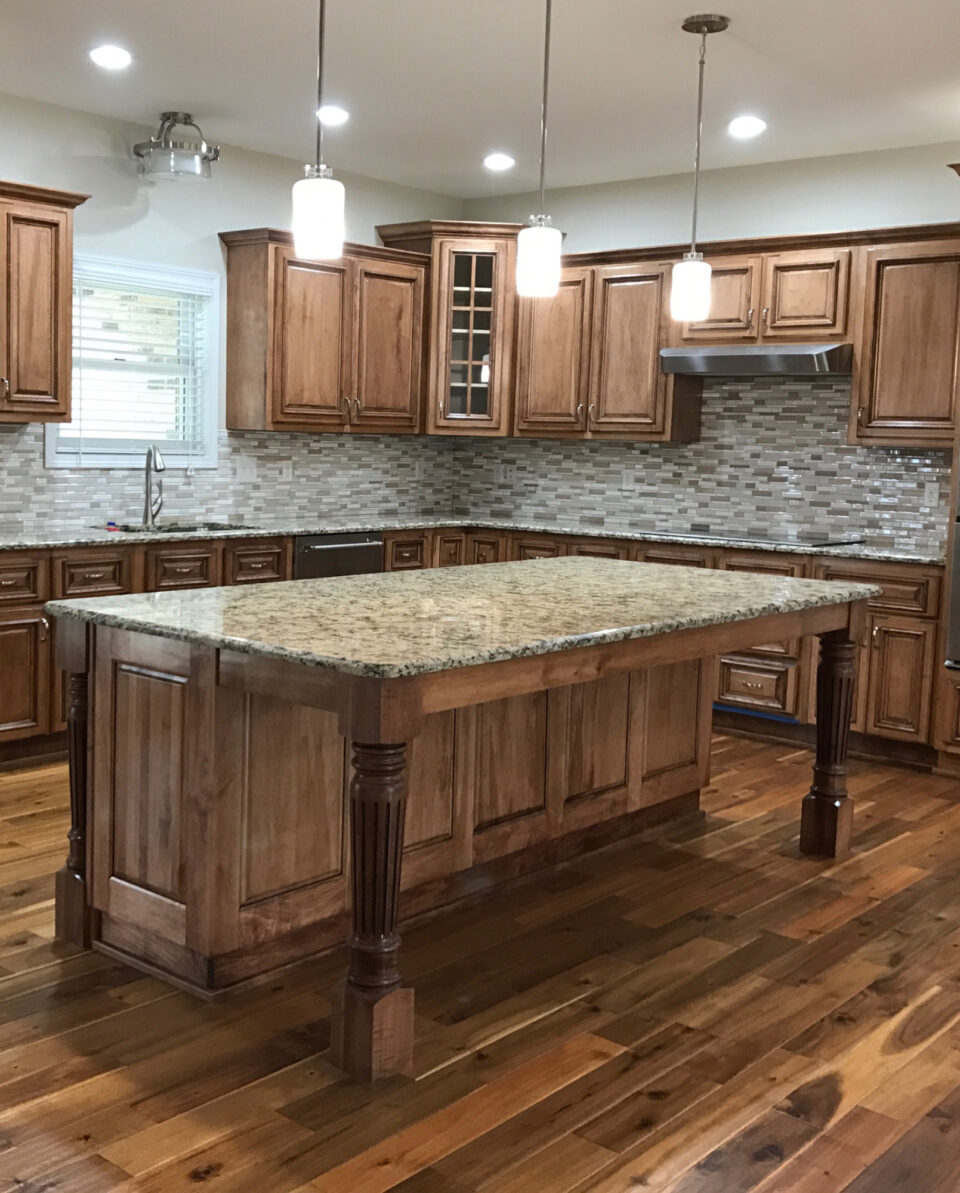Leading Factors To Consider When Choosing a Cooking Area Island Leg for Modern Cooking Area Insides
In the world of modern-day kitchen interiors, the choice of a kitchen island leg is critical, affecting both appearances and capability. As these elements intertwine, they raise even more questions regarding exactly how to attain the excellent equilibrium in between style and practicality, leaving one to consider the implications of each decision on the total cooking area experience.
Material Options
When it concerns picking a kitchen area island leg, material options play an essential role in both aesthetic appeals and performance. kitchen island leg. One of the most common materials consist of timber, metal, and composite options, each offering distinct benefits and prospective disadvantages
Timber is preferred for its warmth and traditional appeal, providing a classic appearance that matches different kitchen styles. It is extremely functional, enabling for personalization in regards to finishes and shades. Timber might call for more upkeep to protect against warping or damage from wetness.
Metal, on the other hand, brings a industrial and modern-day style to kitchen islands. Stainless-steel and functioned iron are prominent selections, known for their sturdiness and resistance to put on. They can endure the rigors of daily usage but may lack the warmth related to wood.
Composite materials, such as engineered timber or synthetic blends, provide an equilibrium in between cost, resilience, and appearances. These alternatives are frequently made to resemble the look of natural materials while offering resistance to spills and scrapes.
Ultimately, the option of product must align with the total kitchen area style and meant usage, making sure that the cooking area island leg is both visually attractive and useful.
Design And Style
The design and style of a kitchen island leg significantly contribute to the general visual of the room, complementing the selected material. When selecting the leg layout, take into consideration the building style of the cooking area. Sleek, minimal legs made of stainless steel or acrylic harmonize with contemporary layouts, while ornate, transformed timber legs enhance traditional or farmhouse appearances.
In addition, the finish of the leg can influence the aesthetic effect; a sleek chrome or matte black finish may evoke modern beauty, while troubled timber talks to rustic beauty. The leg's form likewise plays a vital duty-- straight, angular types share an even more industrial feel, whereas bent or tapered legs present a softer, more welcoming look.
Integrating attractive components, such as carvings or decorations, can include personality and character to the kitchen island, additional improving its role as a focal factor. Inevitably, the chosen leg design should not just line up with the general cooking area layout however additionally reflect the home owner's personal preference, guaranteeing that the cooking area island ends up being a practical and unified focal point within the modern-day kitchen interior.
Elevation and Percentages
Accomplishing the best elevation and proportions for a kitchen island leg is vital for both capability and aesthetics. Kitchen islands generally vary in height from 28 to 36 inches, depending on their planned use-- whether as a cooking surface, eating location, or go to these guys workspace. Criterion counter top height is approximately 36 inches, making it necessary that the legs you select enhance this height to offer a seamless, incorporated look.
Proportions additionally play a crucial duty in the visual equilibrium of the kitchen. The official source dimension and weight of the leg ought to be in consistency with the general layout of the island - kitchen island leg. A slender leg may be suitable for a minimalistic or contemporary island, while a more considerable leg might be required for rustic or conventional styles. In addition, think about the spacing in between the legs; ample range ensures convenience and simplicity of activity around the island.
When picking the elevation and percentages of the cooking area island leg, bear in mind the overall style motif of your cooking area. This interest to information not just enhances the functionality of the space yet additionally adds to a cohesive and visually appealing interior decoration.
Stability and Assistance
Continually ensuring security and support in cooking area island legs is vital for both safety and capability. A well-constructed kitchen island must withstand daily use, consisting of weight from home appliances, cooking, and social events. As a result, the selection of legs need to prioritize durable materials and layouts that can supply adequate assistance.
When examining security, consider the leg's material-- steel, wood, or light weight aluminum frequently supply premium toughness compared to lighter alternatives. In addition, the style should include a broad base to disperse weight equally and minimize the danger of tipping or tottering. Legs made with an A-frame or cross-bracing can dramatically boost stability.

Integrating these factors to consider will certainly not only improve the total safety of the kitchen area area but additionally improve the durability and performance of the kitchen island, making it a valuable centerpiece in modern-day kitchen area interiors.
Completing Touches
When it involves finishing a kitchen island, thoughtful ending up touches can significantly improve both its visual charm and capability. Choosing the right leg style is vital, click here to find out more yet complementing it with appropriate information can change the entire area. Take into consideration including attractive aspects such as toe kicks or walls that match the kitchen cabinetry or flooring to produce a smooth look.

Lastly, the option of surfaces plays an essential function in linking the style with each other. Whether deciding for a matte, shiny, or textured finish, make certain that it aligns with the overall motif of your cooking area. A natural color combination and material choice will certainly raise the kitchen area island, making it an exciting centerpiece. By focusing on these completing touches, house owners can produce a kitchen area island that is both useful and stunning, accommodating their way of life and design choices.
Verdict

In the world of contemporary kitchen area insides, the choice of a kitchen island leg is critical, affecting both aesthetics and functionality.The design and layout of a cooking area island leg dramatically contribute to the general aesthetic of the room, complementing the selected product.Attaining the appropriate height and proportions for a kitchen area island leg is critical for both functionality and aesthetics.Regularly making sure stability and support in cooking area island legs is essential for both security and performance.In recap, choosing a kitchen area island leg for modern insides calls for careful factor to consider of material choices, design style, elevation, percentages, and security.